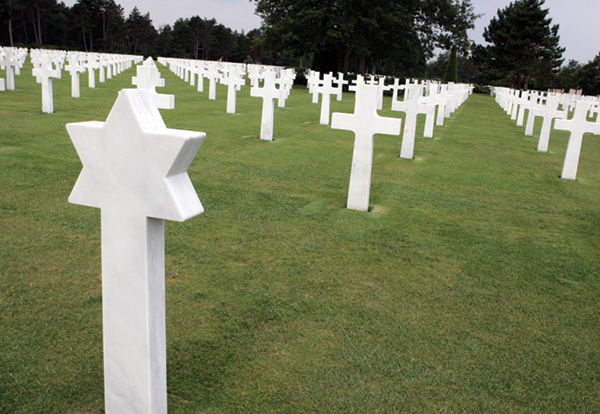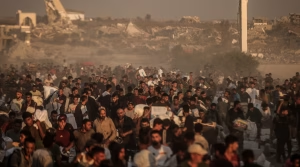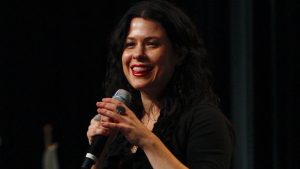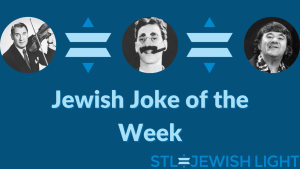Normandy beaches offer needed history lesson
Published June 15, 2016
The next time I hear one of my students or anyone else demand “safe spaces” that spare them any discomfort from offensive or even contrary viewpoints of which they disapprove, I will think of the thousands of American and Allied soldiers who fought and died so that such thin-skinned folks could say whatever they want, however silly it might be.
Last month, my wife and I visited the D-Day battlefield in Normandy, France, where on June 6, 1944, the deciding campaign of World War II was launched. I walked the sacred ground of Utah and Omaha beaches and the American Cemetery, reminded of the extraordinary bravery displayed that day.
The statistics alone tell the extent of the sacrifice. U.S. boats had to land on the beaches at low tide, in order to detect and avoid the “hedgehogs” (the X-shaped metal barricades the Germans had deployed in the water to destroy tanks). Thus, disembarking soldiers — those who did not drown — had to run 500 yards dodging bullets from enemy machine guns that fired 1,200 rounds a minute. The Allies took more than 8,000 casualties the first day, half of whom were Americans.
At St. Mere Eglise, made famous in the movie “The Longest Day,” the paratroopers of the 82nd Airborne Division suffered a 50 percent casualty rate but held the town until reinforcements arrived. At Pointe du Hoc, where 200 Army Rangers were tasked with scaling a 100-foot cliff while facing withering fire from German bunkers above, only 90 GIs were alive June 7.
All told, about 30,000 Americans were killed at Normandy. Ten thousand are buried in the American Cemetery there, including almost 200 Jewish servicemen, whose graves are marked with the Star of David.
More poignant than the raw statistics are the personal stories of individual heroism and tragedy that reveal the character of the men. Many, of course, were frightened, as one would expect. But they overcame their fear to perform incredible acts of valor.
Brig. Gen. Theodore Roosevelt Jr., 56, the oldest son of Teddy and the commanding officer of the 4th Infantry Division, led his men onto Utah Beach despite a heart condition. He died of a heart attack one month after the landing, earning the Congressional Medal of Honor, and was interred at the American Cemetery next to his brother Quentin, a fighter pilot shot down during World War I.
Another Medal of Honor winner was 1st Lt. Jimmy Monteith, who arrived in the first assault wave. He risked his life walking on Omaha Beach ahead of tanks in order to guide them through a minefield before being mortally wounded later in the day.
Two Niland brothers (of “Saving Private Ryan” fame) are buried at the American Cemetery. Buried nearby are Ollie Reed Sr. and Jr., Mildred Reed having received death notification telegrams on the loss of her husband and son just 45 minutes apart in August 1944.
In the tiny village of Angoville-au-Plain, I saw a monument dedicated to Capt. Robert Wright, an American medic with the 101st Airborne, credited with saving the lives of 80 wounded soldiers from both sides in a makeshift hospital he set up in the town church, where bloodstains were still visible on the pews. After the war, he requested that upon his death his ashes be sent to the village, where his remains lie in the church graveyard.
All the while, I was reminded of my Uncle Sam, a radio operator and gunner on a B-17 bomber, who perished on one of the many bombing runs his crew made over enemy-held territory in the European theatre. (Squadron members knew that half of them would not survive the multiple bombing missions they were assigned.) Along with his Distinguished Flying Cross and other medals, I am in possession of the telegram and American flag my grandmother received after his death. The last line of the letter reads:
“I realize that there is nothing that can be said that will minimize your sense of loss or lessen your sorrow, but I hope in the days to come the memory that he heroically gave his life in the service of his country in her hour of need may be of sustaining comfort to you.”
According to family history told to me, the night before he went overseas he was toasted with wine glasses that were then placed upside down, to be placed upright upon his safe return.
Family after family suffered similar heartbreak.
In Normandy, one could sense the French appreciation of Americans as liberators. Yet Americans themselves – at least millennials and younger generations — do not fully appreciate their own history and the key role the United States played during the Second World War in preserving freedom.
Washington Post education writer Jay Mathews, in a Memorial Day column not long ago, reported that he had surveyed high school students to determine what they knew about WWII. Predictably, given the PC history taught today, students readily mentioned the Japanese-American internment camps, although few could name a single American general or battle. D-Day was not on their radar screens.
These are the sophomoric types who, when not demanding “safe spaces,” are calling for “courageous conversations,” clueless about what true courage looks like and to whom they owe their safety.
In fairness to them, they cannot know what they are not being taught. Any honest account of World War II should make young people aware of not only Rosie the Riveter and the Tuskegee Airmen and the efforts of society to address sexism and racism, which are now staples of the American history curriculum, but also the exploits of Jimmy Monteith and his comrades in arms on that fateful day over 70 years ago.
Perhaps among the many study-abroad trips students take these days to Paris and other sexy places, they might be able to squeeze in a visit to the quiet shores of Normandy.
















